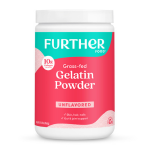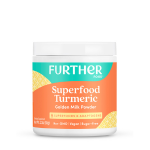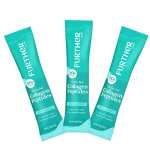Before we cover how to naturally treat endometriosis using traditional medicines, what exactly is this medical condition? Endometriosis is a painful condition that affects about 2-10% of women in the US between the ages of 25 and 45. Many of these women struggle with pain, infertility, and other complications, which can be challenging to treat, both physically and mentally. As someone who has suffered from endometriosis, I know just how painful and disruptive it can be to your whole life. When I found life-changing relief after working with an acupuncturist, I was inspired to become an acupuncturist and functional medicine doctor myself so I could help others treat their symptoms and illness, including endometriosis, naturally.
While conventional medicine often treats endometriosis with medication, hormone therapy, and surgery, Traditional Chinese Medicine (“TCM”) looks for the root cause of endometriosis and relieves pain with acupuncture and herbal formulas. Read on to learn more about endometriosis, endometriosis self-care, and how to naturally treat endometriosis symptoms.
What is Endometriosis?
A part of practicing endometriosis self-care means having a full understanding of how this condition works. Endometriosis occurs when the endometrium (the tissue that usually grows inside the uterus) grows outside of the uterus. Your ovaries, fallopian tubes, pelvis tissue, bowel, rectum, and bladder can all end up with endometrial-like tissue, which builds up and can cause symptoms ranging from painful periods to fertility issues.
This scar tissue reacts on the outside of your uterus the same way it does inside – it gets thick, “breaks down,” and bleeds as it does during menstruation. However, since the endometrium has no way to leave your body. It can adhere to different places throughout the body and cause a variety of symptoms and complications, including:
- Ovarian cysts
- Chronic inflammation
- Masses and lesions
- Irritation of surrounding tissue
- Scar tissue
- Adhesions that can cause tissues and organs to stick
- Fertility issues
Endometriosis Symptoms
The most common symptom of endometriosis is chronic pelvic pain, especially during menstruation. Endometriosis can often lead to dysmenorrhea, which is characterized by severe and frequent cramps and pain during your period. Some other common symptoms include the following:
- Fertility issues
- Pain during sexual intercourse
- Pain with urination
- Pelvic bloating
- Fatigue
- Heavy menstruation
- Irregular menstruation
- Digestive symptoms like bowel movement pain, diarrhea, constipation, bloating, and nausea
Chinese Medicine for Endometriosis: Diagnosing Endometriosis with TCM
The approach to using Chinese medicine for endometriosis differs from the conventional approach. A TCM practitioner who offers Chinese medicine for endometriosis is always looking at root causes and symptoms that are unique to you and your body. They will work with you to help you find out the reasons for your endometriosis and treat some of the imbalances that may contribute to your pain and inflammation. Some of the symptoms or conditions that your acupuncturist will want to know more about include looking into any history of autoimmune disorders, chronic stress, constipation or chronic intestinal issues, chronic use of antibiotics or repeated use of antibiotics, chronic infections (sinus, lung), eczema or psoriasis, and/or a history of Urinary tract or vaginal infections.
Interestingly though, in TCM, endometriosis is not categorized as a disease but as menstrual pain. According to Chinese medicine for endometriosis, endometriosis is considered a “blood stasis syndrome with the formation of abdominal lumps.” Blood stasis refers to stagnant energy or Qi and kidney yang deficiency, both of which are key concepts in TCM practice. Below are some TCM concepts that are considered in diagnosing and practicing endometriosis self-care.
How to Naturally Treat Endometriosis: Qi energy
According to Classical Chinese Philosophy, Qi translates to “vital life force” or the energy that creates and binds all things together in the universe. In Chinese medicine for endometriosis, Qi includes two branches- physical Qi, which includes all of the air, food, and water that we consume, and the other branch is the energy and fluids that already exist in our body.
According to TCM belief, Qi flows freely until it doesn’t. When QI energy slows or stagnates, this leads to imbalances and interruptions that can result in conditions like endometriosis.
Kidney Yang
Kidney yang, also known as primordial yang, is the foundation of yang qi in the body, and it warms and supports the functions of all your organs and tissues. Kidney yang deficiency happens when an imbalance occurs between kidney yang and its counterpart kidney yin; the two work in constant collaboration and rely on each other for balance.
Liver Qi stagnation
This includes qi or energy circulation restriction caused by emotional or physical trauma.
Cold uterus and yang deficiency
These can be the result of impaired circulation and metabolism. Often these types of deficiency are connected to autoimmune diseases such as celiac disease, lactose intolerance, and hypothyroidism.
TCM Approach to Endometriosis Self-Care and Pain Relief
So, what are the steps in how to naturally treat endometriosis using TCM? TCM approaches endometriosis with a variety of treatments, including acupuncture, Chinese herbs, and other natural remedies. Many TCM treatments have been shown to be effective in several research studies over the years. And TCM has grown in popularity and use as a TCM treatment. In a study on a random sample of one million individuals, researchers found that 25.2% had used TCM treatment for symptoms related to endometriosis.
How to Naturally Treat Endometriosis: Acupuncture
While acupuncture cannot reverse endometriosis, this endometriosis self-care method is still useful. Acupuncture can help with balancing hormones, regulating your menses, alleviating pain, decreasing inflammation, and restoring overall balance. Specifically, research shows that acupuncture increases blood circulation, regulates the endocrine system, and has analgesic properties.
Regular acupuncture and acupressure treatments can help reduce blood stagnation and inflammation; most importantly, they provide much-needed pain relief. According to a study by the Journal of Traditional Chinese Medicine, it was reported that 81% of women in the trial had less painful periods after receiving acupuncture treatments.
How to Naturally Treat Endometriosis: Chinese Herbal Formulas
TCM helps move pelvic blood flow while decreasing the inflammation in the body and supporting regular immune system activity. Chinese herbs can address the qi and blood stagnation that occurs during endometriosis.
In a 1980 study, researchers found that after two clinical trials using Chinese herbs for endometriosis, 82% of the women saw their symptoms “mostly or entirely alleviated. “I think the positive message is that Chinese herbal medicine may offer equivalent benefits to conventional medicine but with fewer side effects,” lead researcher Andrew Flower of the University of Southampton in the U.K., told Reuters Health.
Below are some herbal formulas that can be used for treating endometriosis:
Gui Zhi Fu Ling Wan: Also known as the cinnamon and hoelen formula, is the most common formula prescribed for endometriosis in TCM. Gui Zhi Fu Ling Wan is a Chinese herbal formula with an anti-inflammatory effect, used for over 2000 years for menstrual disorders and pregnancy complications. This formula also improves blood circulation, relieves abdominal pain, and regulates menstruation.
Dang Gui Shao Yao San: Also known as tangkuei and peony formula, this helps to nourish and tonifies the blood and Qi. Dang Gui Shao Yao san also soothes the liver and helps with several deficiencies, including Spleen-Qi, Blood, and Liver Blood.
Jia Wei Xiao Yao San: Also known as bupleurum and peony formula, Jia Wei Xiao Yao San removes liver qi stagnation and soothes the liver. These herbs are recommended to support menstruation and have been used for about 200 years to promote energy or Qi flow, relieve painful spasms, and improve blood circulation.
Castor oil: While not an herbal formula per se, castor oil is used for treating endometriosis as well. Castor oil comes from a seed native to India – the castor seed. It is rich in ricinoleic acid and has been used in ancient medicine and healing by the Egyptians and Japanese since ancient times. Using castor oil can help break up stagnation in the blood and increase circulation through your pelvic area. Castor oil can soften masses, prevent endometrial tissue from building up, reduce inflammation, and regulate menstruation.
Other ways to heal endometriosis
Exercise – Regular physical activity increases blood flow. Often restorative yoga is a good choice as it increases circulation but is gentler on your body which can be a relief when experiencing endometriosis pain.
Estrogen dominance – Sometimes, your acupuncturist will consider if you have estrogen dominance, which occurs when the liver metabolizes too much estrogen into the body. Taking herbs like milk thistle, dandelion, and burdock root will help detoxify your liver and support normal liver function reducing the excess estrogen in your body.
If you are struggling with endometriosis, I hope you will consider some of the TCM treatments I’ve discussed. If you want more information on TCM practices or want to work with me directly, you can learn more about me at Healing Points Acupuncture and Wellness Center.
Want to read more?
10 Surefire Tips for Helping Endometriosis Pain
21 Things Never To Say To Someone Struggling With Infertility
What Is Acupuncture? An Internationally Recognized Acupuncturist Explains
























